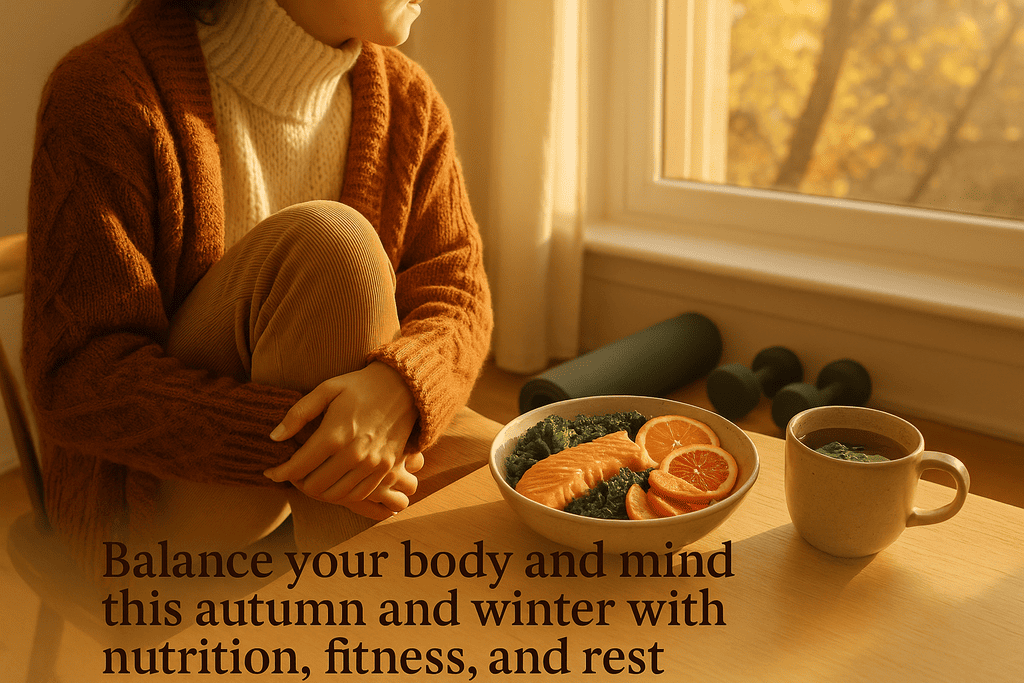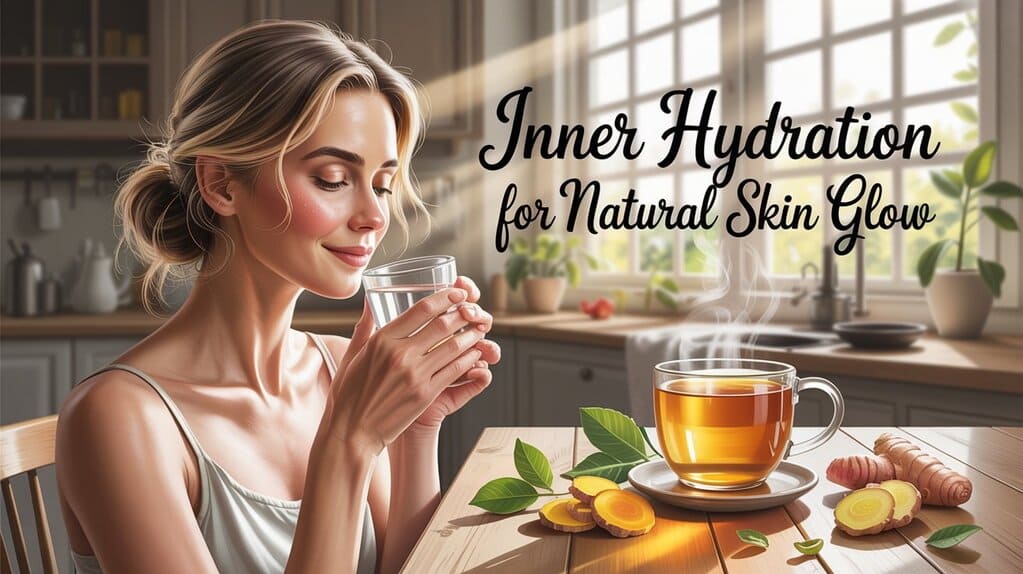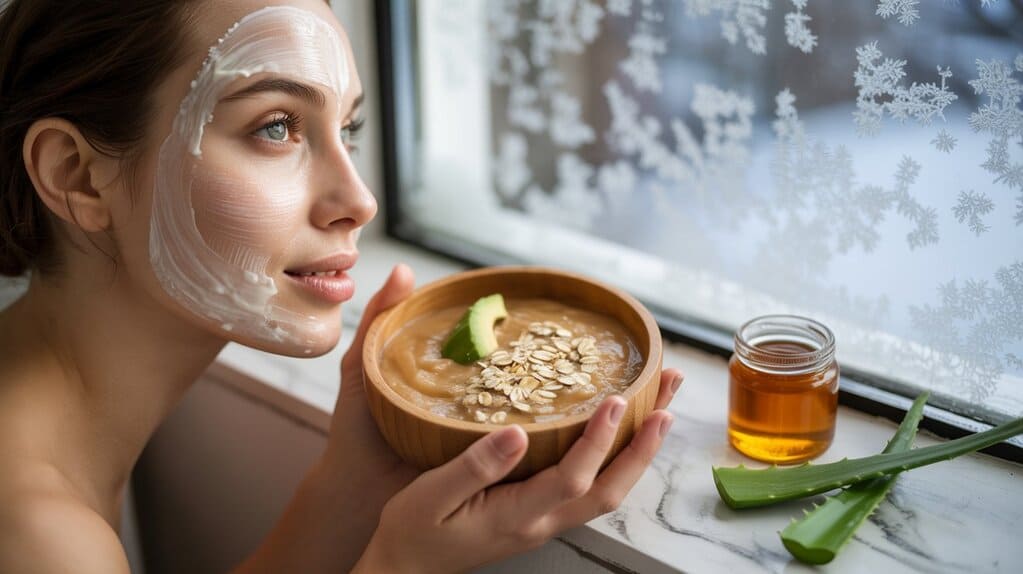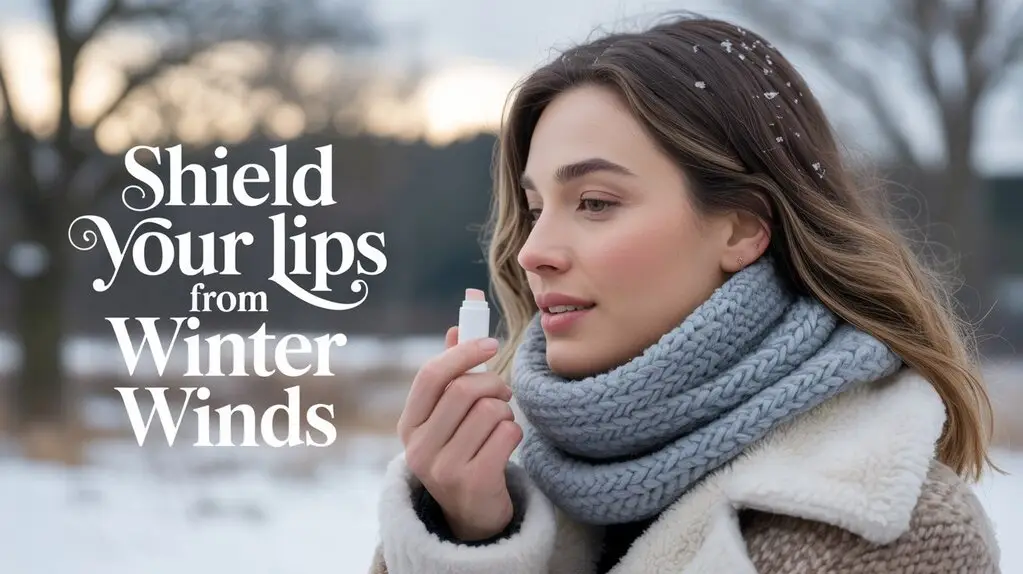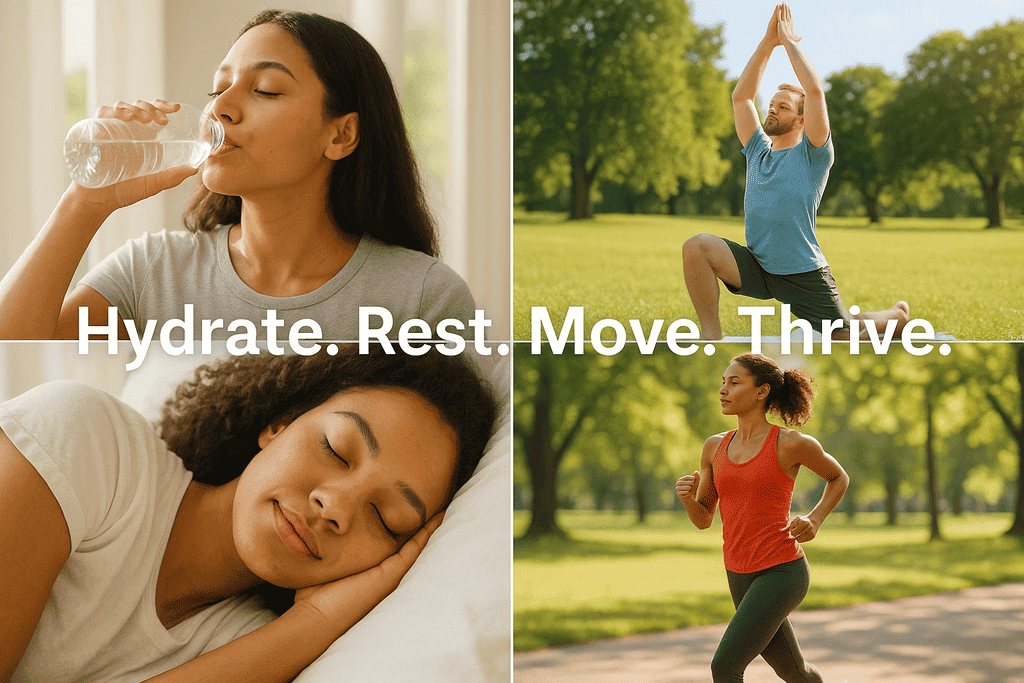
Introduction
Autumn is a season of change: cooler temperatures, shorter days, shifting humidity, and the start of cold-and-flu season in many regions. These environmental shifts affect our energy, metabolism, immune responses, and the health of our skin and hair. A smart seasonal strategy—combining regular exercise, nutrient-dense eating, immune-supporting habits, and targeted skincare—helps you stay healthy, resilient and radiant through fall and into winter.
This guide delivers an evidence-informed, practical plan you can use today: lifestyle routines, nutrition-focused menus, a weekly fitness schedule, skin-care adjustments, and the science behind why these steps work. Major claims below are supported by modern scientific and medical studies and reputable health organizations.
The Big Picture : Why Autumn Needs a Plan
Seasonal changes influence biology. Large cohort studies show measurable seasonal variation in immune parameters, which can alter susceptibility to respiratory infections and modify inflammatory responses. Planning ahead—by optimizing nutrition, exercise, sleep, and skincare—reduces risk and keeps performance high. PMC
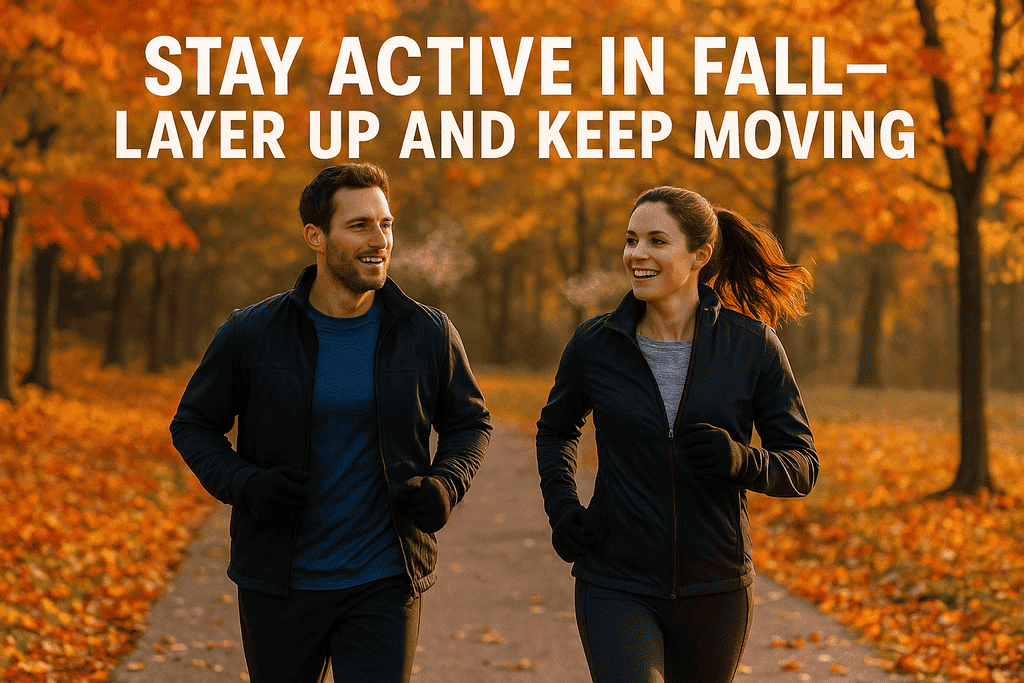
Part I — Fitness : Train with the Season (Main Points)
Why it matters: Regular, moderate exercise improves immune surveillance, balances inflammation, enhances vaccine response, preserves muscle and metabolic health, and supports mood during darker months. High-quality reviews and recent studies confirm exercise’s beneficial effects on infection resistance and immune function when done consistently and without extreme overtraining. PubMed+1
Practical Weekly Fall Workout (Table 1 — 7-day plan)
| Day | Session (Duration) | Purpose |
|---|---|---|
| Monday | Brisk walk or jog (30–40 min) | Aerobic base, immunity boost |
| Tuesday | Strength training (45 min) — full body | Muscle preservation, metabolic health |
| Wednesday | Active recovery: yoga/stretching (30 min) | Mobility, stress reduction, sleep quality |
| Thursday | Interval training (20–30 min) | VO₂ max, circulation, immune cell mobilization |
| Friday | Strength training (45 min) | Hypertrophy, bone health |
| Saturday | Outdoor activity (hike, bike) (60+ min) | Sun exposure, mood, endurance |
| Sunday | Rest or gentle walk (20–30 min) | Recovery, immune system restoration |
Notes:
- Prioritize consistency over intensity. Avoid sudden spikes in volume that lead to overtraining.
- If you have chronic conditions, consult your doctor before changing intensity.

Part II — Nutrition : Fall Foods That Support Immunity & Beauty
Why it matters: Diet supplies macro- and micronutrients that immune cells and skin tissues need every day. Balanced eating supports barrier function (skin, mucosa), antibody production, and regulated inflammation. Reviews of foods and nutrients show benefits from whole-food diets rich in fruits, vegetables, lean protein, healthy fats, and fermented foods. PMC+1
Fall Superfoods & Nutrient Targets (Table 2 — Key foods & why)
| Nutrient / Food | Role | Fall examples |
|---|---|---|
| Vitamin C | Antioxidant, supports leukocytes | Citrus, kiwi, Brussels sprouts |
| Vitamin A / Beta-carotene | Mucosal & skin integrity | Pumpkin, sweet potato, butternut squash |
| Vitamin D | Immune modulation (note mixed/limited trial benefit) | Fatty fish, fortified dairy; consider tested supplementation if deficient. Recent meta-analyses show no consistent protective effect of routine vitamin D supplements against all acute respiratory infections — check levels with your clinician. The Lancet |
| Zinc | Antiviral defense, wound healing | Oysters, meat, legumes, pumpkin seeds |
| Protein | Antibody and tissue repair substrate | Poultry, fish, legumes, eggs |
| Probiotics / Fiber | Gut-immune axis support | Yogurt, kefir, kimchi, whole grains |
| Omega-3 fatty acids | Anti-inflammatory support | Salmon, sardines, walnuts, chia seeds |
Sample Day (Fall Immune-Supporting Menu)
- Breakfast: Greek yogurt + mixed berries + oats + pumpkin seeds.
- Lunch: Roasted pumpkin & kale salad with grilled salmon and quinoa.
- Snack: Apple + almond butter.
- Dinner: Chicken and vegetable soup (bone broth optional), whole grain bread.
- Night: Chamomile tea; maintain hydration.

Part III — Immunity : Habits Beyond Food & Fitness (Main Points)
Lifestyle habits that matter:
- Sleep: 7–9 hours nightly supports immune memory formation and inflammatory regulation.
- Stress management: Chronic stress raises inflammatory markers—use mindful breathing, meditation, or nature walks.
- Vaccination: Stay current with recommended vaccines (influenza, COVID-19 boosters as advised).
- Hygiene: Handwashing, respiratory etiquette, and avoiding crowded indoor spaces when local incidence is high.
Scientific analyses emphasize that systemic lifestyle factors (sleep, diet, exercise, stress) together shape immune competence far more than single “magic” supplements. The Nutrition Source+1

Part IV — Beauty & Skincare : Protecting Your Skin and Hair in Autumn
Why it matters: Lower humidity, cooler air, and indoor heating can dry the skin, weaken the skin barrier, and increase sensitivity and flaking. Clinical dermatology research shows moisturizers with ceramides, glycerin and humectants improve barrier function and surface hydration. Regular skin care adjustments reduce transepidermal water loss and keep skin radiant. PMC+1
Fall Skincare Checklist (Illustration — stepwise routine)
- Cleanse gently — use a mild, pH-balanced cleanser (avoid stripping surfactants).
- Hydrating serum — hyaluronic acid to attract and retain moisture.
- Barrier repair moisturizer — creams containing ceramides, fatty acids, glycerin.
- Target treatments — retinoids at night (if tolerated), vitamin C in AM (antioxidant).
- Sunscreen — broad-spectrum SPF daily (UV exposure still matters).
- Humidifier at night to counter dry indoor air.
- Hair care — deep-conditioning masks weekly; avoid over-washing.
Quick Reference Table — Fall Action Plan (Table 3)
| Domain | Priority This Season | Practical Tip |
|---|---|---|
| Fitness | Moderate, regular exercise | Follow weekly workout table; prioritize strength 2×/week |
| Nutrition | Whole-food, nutrient-dense | Add seasonal veggies: pumpkins, apples, cruciferous veg |
| Immunity | Sleep, stress, vaccines | 7–9 hrs sleep, mindfulness 10–20 min/day |
| Skin | Restore barrier & hydration | Switch to richer moisturizer; use humidifier |
| Supplements | Case-by-case | Test vitamin D if risk factors; zinc for short-term colds per clinician advice |
Scientific Notes & Evidence Highlights
- Seasonal immune variation: Large population studies document day-to-day and seasonal variability in immune markers; planning around these patterns is sensible. PMC
- Exercise and immunity: Recent reviews conclude that regular moderate exercise enhances immune surveillance, reduces chronic inflammation, and supports vaccine responses. PubMed+1
- Nutrition & foods: Systematic reviews identify vitamin-rich fruits/vegetables, zinc, protein and probiotic foods as consistently supportive for immune function and mucosal barriers. PMC+1
- Vitamin D: Large updated meta-analyses report inconsistent or non-significant protection from vitamin D supplementation against acute respiratory infections in general populations; clinical decisions should be individualized based on serum levels. The Lancet
- Skin barrier & moisturizers: Clinical trials show many modern moisturizers improve skin barrier metrics and reduce dryness in seasonal transitions. PMC
Conclusion
Autumn is an invitation to adapt: aligning movement, food, sleep, and skincare with the season reduces illness risk, preserves strength and radiance, and supports long-term health. The simplest, highest-impact steps are consistent moderate exercise, a colorful whole-food diet rich in vitamin- and mineral-dense fall produce, prioritized sleep and stress-reduction, staying up to date with vaccinations, and switching to barrier-focused skincare.
Start small: pick two nutrition swaps, commit to three 30–45 minute workouts per week, and replace one light moisturizer with a richer barrier cream. These changes compound—by the time winter arrives you’ll be stronger, better protected, and glowing.
References (selected modern studies & reputable sources)
- Wyse, C. et al. Seasonal and daytime variation in multiple immune parameters. (UK Biobank analysis). 2021. PMC. PMC
- Wang, J. et al. The effect of physical activity on anti-infection immunity. 2025. PubMed. (Review on exercise and immune function). PubMed
- Singh, D. N. et al. Common foods for boosting human immunity: A review. 2023. PMC — review of immune-supporting foods. PMC
- Jolliffe, D. A. et al. Vitamin D supplementation to prevent acute respiratory infections: updated meta-analysis. The Lancet (2025). (Findings show no statistically significant protective effect in broad populations; test and treat when indicated.) The Lancet
- Wang, D. Q. et al. Effects of investigational moisturizers on the skin barrier. 2023. PMC — clinical data on moisturizers and barrier repair. PMC
- Harvard T.H. Chan School of Public Health, Nutrition and Immunity (The Nutrition Source). (Practical guidance on diet and immune function). The Nutrition Sour

